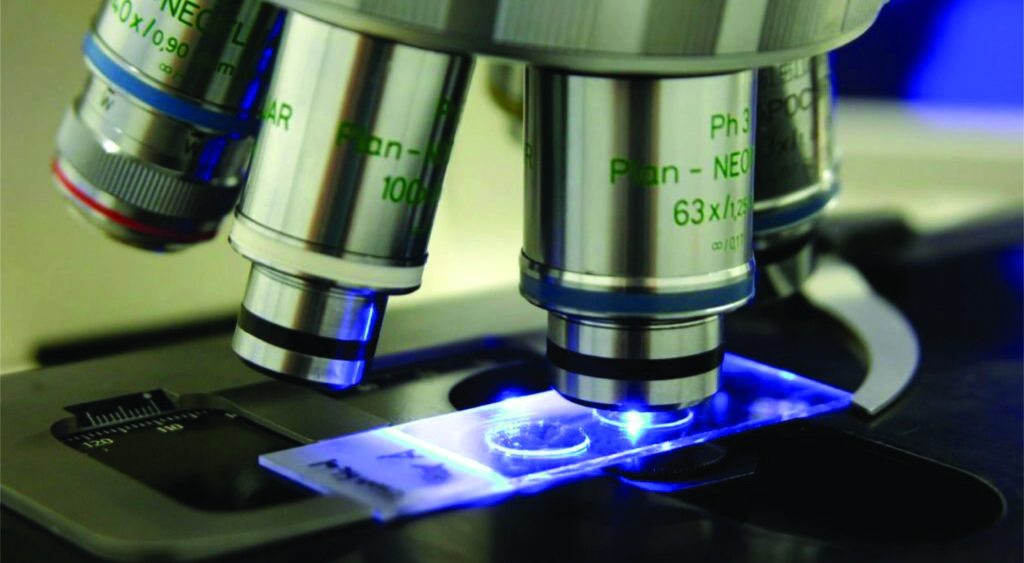“The science of sterilization is extensive, from water quality and its characterization to chemistries and temperatures used to achieve sterility. So, to deliver the science, we must begin at the beginning.”
By: Angela Lewellyn on August 2021

Water is the source of all life. In Sterile Processing, it’s the lifeblood of the sterilization process. As Advantage Support Services often assesses Sterile Processing Departments, we identify challenges with the water quality available. From the greatest to the least of these range from no critical water available to technicians using rinse water sparingly in the manual wash stage. Bioseal serves our Sterile Processing Departments well by providing products to help the department become more efficient, thus serving the end-user and our patients. As an added value for Bioseal customers, we would like to share some information for practical application when troubleshooting staining on surgical instrumentation. Because water quality affects instrument staining dramatically, we’d like to share the importance of water from manual to mechanical wash stages, the quality of the water used, and how it affects instrumentation.
According to AAMI TIR34: 2014/(R)2017 Technical Information Report: Water for the reprocessing of medical devices, water is separated into categories of Utility and Critical. Utility Water is the water as it comes from the tap that might require further treatment to achieve the specifications. This water is mainly used for flushing, washing, and rinsing. Critical Water is defined as the water that is extensively treated (usually by a multi-step treatment process to ensure that the microorganisms and the inorganic and organic material are removed from the water.
From the Greatest to the Least
In a perfect world, these sometimes pathogenic and harmful microorganisms would not enter into our water system, and our surgical instrumentation quality would always reach our expectations. Yet, as we have all experienced, instrumentation comes with challenges during the processing stages. The science of sterilization is extensive, from water quality and its characterization to chemistries and temperatures used to achieve sterility. So, to deliver the science, we must begin at the beginning. How is utility and critical water used? What can their effects be on the instrument? And how does it affect the process steps we take as Sterile Processing Technicians?
Point of Use
The first step for reprocessing an instrument starts at the point of use as the surgical technologist removes gross bioburden from the instrument. As they prepare for transportation at the end of the surgical case, they should apply a pretreatment product to help break down proteins and others on the instrument. Utility Water in the decontamination area plays an important role in removing the pretreatment from the instrument. During the manual wash, instruments should be placed in a cold-water rinse with running tap water or soaked in cool water. This helps to prevent coagulation of any body fluids and rinses/removes pretreatments that can interfere with the cleaning process. Utility Water can be utilized in the manual cleaning process, but the final step of manually washing must be critical water.
Critical water utilized as the final rinse in a manual and mechanical wash is the best practice standard. Items that are not submersible or able to be washed and disinfected in a Mechanical Washer Disinfector must assure the same quality of care given to those mechanically washed. So, the final rinse for items that may be sent through a pass-through-window in a decontamination area to the assembly area should be with critical water.
As the water is utilized in a decontamination area, water quality behind the scenes should be considered, even educated to the sterile processing technicians. Although we may take water from a faucet for granted, we as processing professionals should become familiar with water testing and consider the characteristics of water. According to AAMI TIR 34, ongoing monitoring should be performed to ensure that the water quality is maintained. If water quality is not monitored, the water treatment system could become heavily contaminated with microorganisms and could contribute to corrosion, staining, and increased microbial levels after reprocessing. We should be aware that patient risks may be elevated during times when the water quality is not adequate.
A Quick Troubleshooting Guide
First and foremost, if staining is identified on instrumentation, perform a water quality analysis. One of the reasons for staining is poor water quality. Some staining is a result of poor processes, as the operating room staff may allow bioburden to dry on the instruments by failing to apply a pre-enzyme, and not transporting the case cart to the decontamination area in a timely manner. It can also be due to poor cleaning habits in the decontamination area. Some items, we should note, have design issues and make the item difficult to clean.
If corrosion, pitting, and rusting are identified, the SP and O.R. leaders should assess processes at all touch points of the instruments, evaluating whether items are handled in a manner that may cause damage and if the point of use and transportation is causing issues. During the point of use, intra-operative care, and handling of instruments, the leaders should identify if saline or iodine are being utilized on instruments. The next steps to assess are to determine if the detergents and enzymes used are according to the Manufacturer’s Instructions for Use (MIFU), and to test the quality of the water, specifically the pH levels.
During the sterilization process, the touch points of instrumentation allow for quality checks. If stainless steel items are identified with a gold-brown discoloration, assess if there is excessive heating applied to stainless steel surfaces. Possible causes would be either a super-heated load in a steam sterilizer or steam temperatures above the MIFU recommendations of the instrument manufacturer.
Another Quick-Tip Troubleshooting Guide
Commonly due to chromium oxide, technicians may identify rainbow discoloration. If an orange-brown discoloration is noticed, a phosphate layer is indicated. It develops on the surface and is usually due to poor water quality and lack of rinsing the instrument appropriately. If a black-purple stain is identified, it is commonly from steam sterilization and is caused by a high/low pH in Critical Water. These colors can also be from water quality and insufficient rinsing with low acidic or high alkaline chemistries.
Often assessed in department audits are white chalky spotting or green/red discoloration and is a quick identifier for water hardness in steam sterilization. This causes a buildup over time and is due to either copper and iron chemical contaminants and/or inadequate rinsing.
Water Analysis
Water analysis results will determine the following contributors of unacceptable organic and inorganic levels and their effects on instrumentation. When we assess data for the quality of the water, either utility or critical, there are many factors to consider.
Bacteria – The final water product is produced in the water treatment system. If the Critical Water is tested at this point, it should be bacteria-free. From the final product in the reservoir tank, the water is transported to the decontamination areas through pipes. These pipes can produce and harbor different bacteria. The acceptable level provided in TIR 34 has been defined as 10 cfu/mL.
Endotoxins – Only Critical Water used in the final rinse, in either manual or mechanical wash, is derived by a process that would be expected to remove endotoxins. Although RO treatment should eliminate endotoxins, some might be detected because of passage of the water through tubing that is not endotoxin-free. If the final rinse of a medical device is done with Critical Water containing less than 10 EU/mL, the number of endotoxins left on the device is expected to be only a fraction of that amount. The device, in this case, would have far less than 20 EU remaining on its surface. Tap water or softened water is produced by a process that does not remove endotoxins, so utility (tap) water is not to be used for the final rinse of critical devices. But if endotoxins are not detected within the recommended level, deionized water can be used to rinse critical devices.
Total organic carbon (TOC) – Only the process of creating Critical Water removes microorganisms and organic materials. Yet, softened, or deionized water would be expected to have total organic carbon levels that are no worse than tap water; therefore, the TOC value for both water categories has been defined as less than 1.0 mg/mL.
pH (Power of Hydrogen) – Levels of pH denote the alkalinity or acidity of water. The scale runs from 0 to 14, and the neutral point is 7. Numbers below 7.0 indicate acidity, and those above 7.0 indicate alkalinity. For all rinse stages, including the thermal rinse, a pH level near neutral (6-8) is usually indicated. Water that is either too acidic or too alkaline can cause corrosion, pitting, rusting, stress cracking, loss of color of items (rigid containers), and black or purple staining. In addition, it can interfere with the efficacy of detergents and disinfectants. Tap water is expected to have a pH in the range of 6.5 to 8.5.
Water hardness – Utility water is given a level of CaCO3 (Calcium Carbonate) higher than 150 ppm because tap water is generally considered “hard.” Ensuring the water hardness is less than the acceptable value helps the efficacy of the detergents used in manual or mechanical wash cycles and reduces the risk of hard-water deposits during reprocessing. If the water hardness is corrected by softened water, the value of the water is 10 mg/L. The critical water process should remove solutes and produce a calcium carbonate level of less than 1 ppm. As we inspect the instruments at quality inspection points during the sterile processing steps, SP Technicians should ensure hard-water spots are absent or removed from the instrument. Specifically, the three points of inspection to verify that spotting is absent are at the manual sink, after the mechanical wash cycle is complete, and during assembly of the instrument package.
Ionic contaminants – An ion is an atom or molecule with a net electric charge due to the loss or gain of one or more electrons. The ionic content of water is indicated directly by the measured concentration of the individual ions and indirectly by the measured resistivity of the water. Resistivity is the ability of water to resist the flow of electricity. Ionic contaminants (iron, chloride, copper and manganese) in water used in medical device reprocessing can corrode devices. The critical water process removes these ionic contaminates and recommends a value of these ions in AAMI TIR 34 as chloride and iron less than 0.2 mg/L and copper and manganese is less than 0.1 mg/L. Assuring these levels are achieved by testing water at the final product tank will minimize the risk of corrosion. To help the Sterile Processing Department troubleshoot staining and corrosion identified on processed instrumentation, water should have low levels of chloride, iron, copper, and manganese as well.
Watercolor – The color of the water can easily be tested by the SP staff. Tap water is expected to be colorless and clear and contain no residues.
In Closing:
Together with Bioseal, we should all jump into the water, headfirst. To dive into the sciences of sterilization helps us all to serve our patients well. AAMI and others provide us the tools to come to our own rescue. Learning the sciences of sterilization aids our ability to troubleshoot issues within our department.
Resources:
ANSI/AAMI ST79:2017 with Amendments A1:2020, A2:2020, A3:2020, A4:2020
AAMI TIR34: 2014/(R)2017 Technical Information Report: Water for the reprocessing of medical devices



Comments are closed